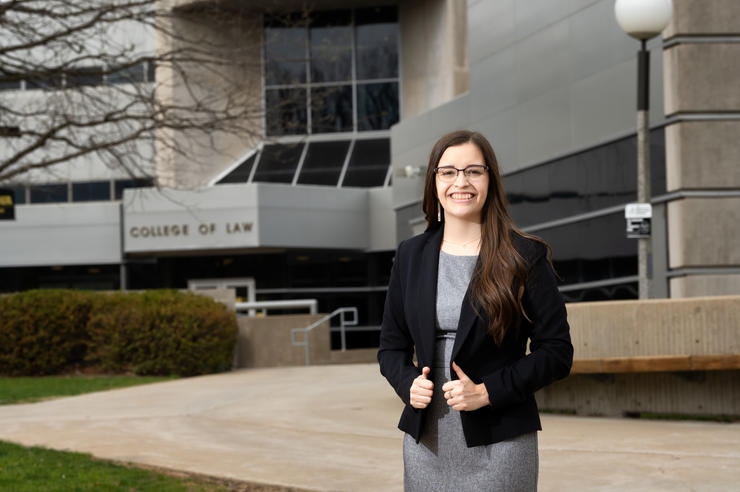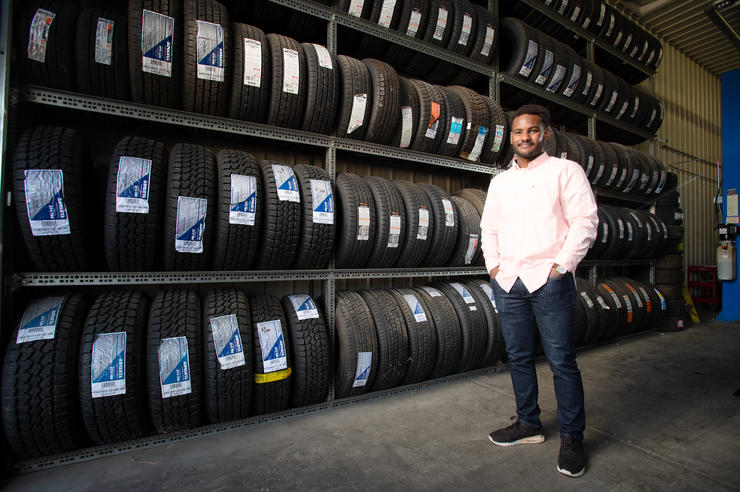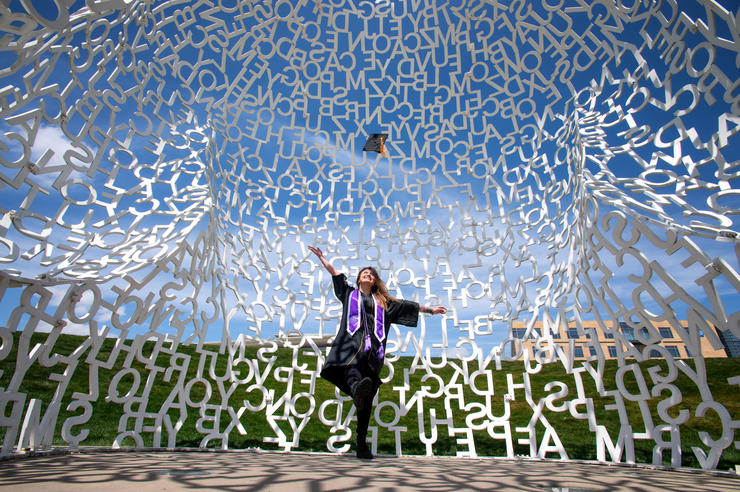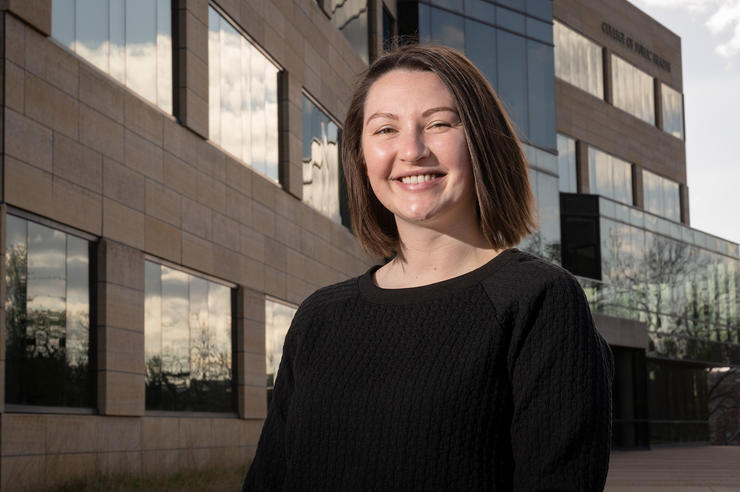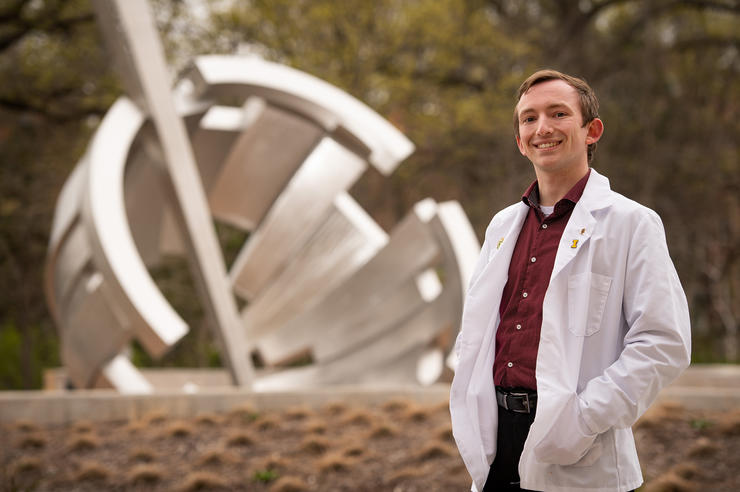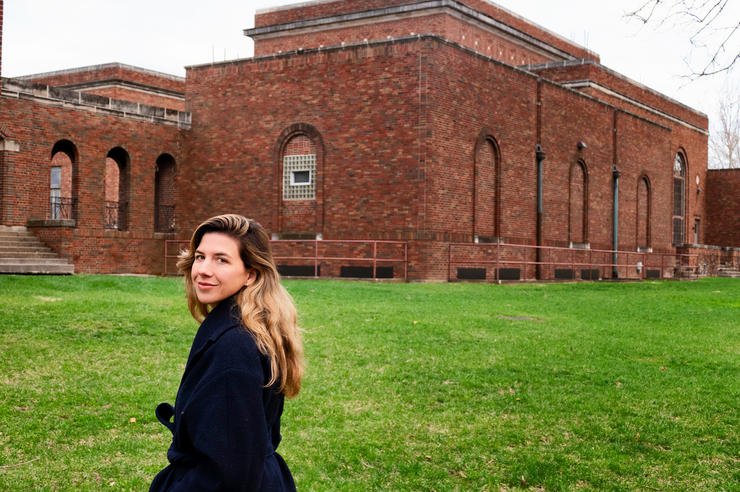Reaching for the cosmos
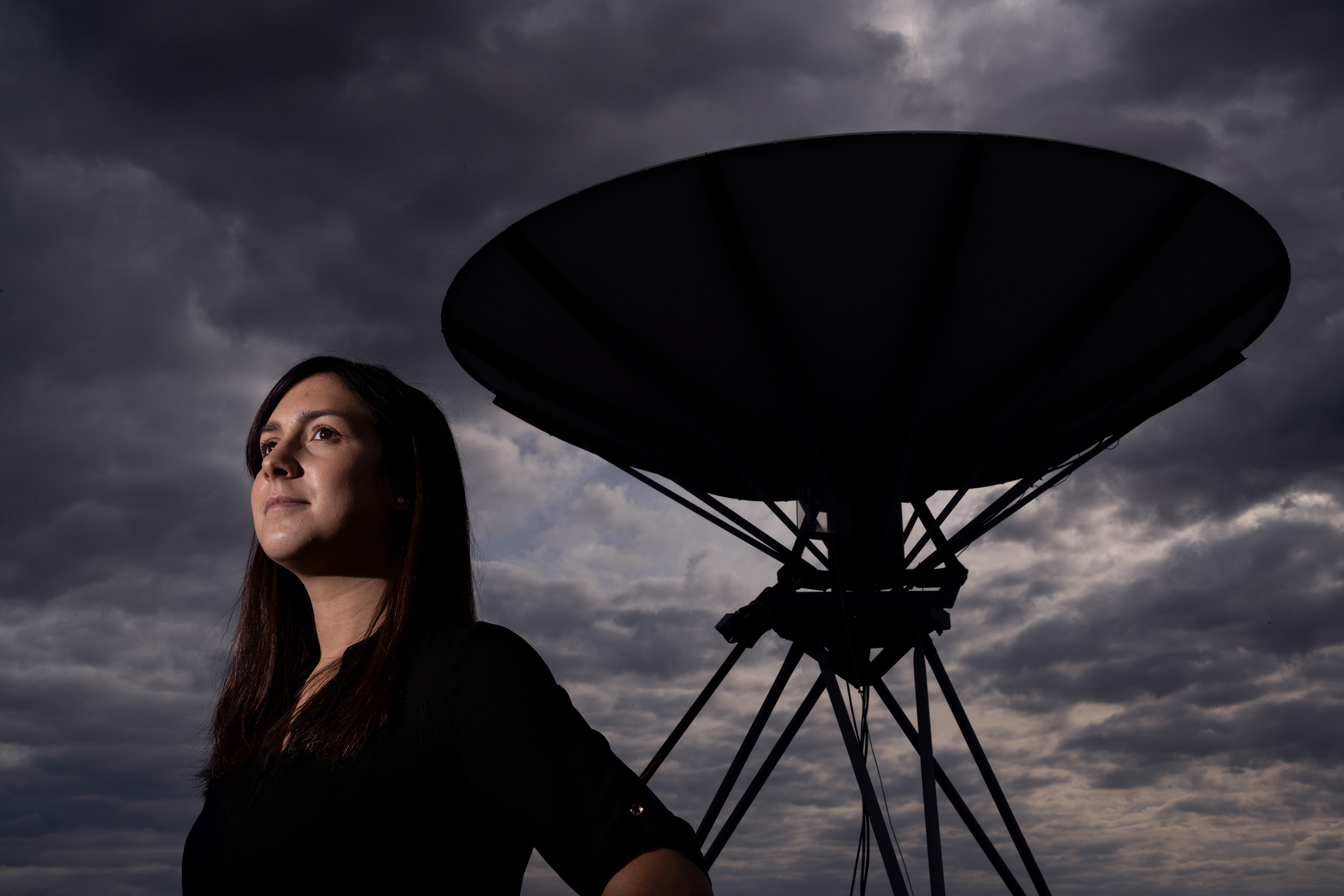
Soon after Emily Silich entered the University of Iowa, she faced a big decision.
The Epworth, Iowa, native knew she wanted to study the so-called hard sciences—but which one?
Hometown: Epworth, Iowa
Degrees: BS, astronomy; BS, physics
Future plans: Enroll in the doctoral program at the California Institute of Technology, in the Division of Physics, Mathematics, and Astronomy
In the end, she turned to a discipline that’s always been there for her.
“When I say astronomy has been a constant, what I mean is I’m perpetually confused by the universe,” says Silich, who will graduate this May with Bachelor of Science degrees in astronomy and physics and a minor in mathematics. “It’s something that’s always intrigued me, it’s always fascinated me—it’s something I’ve never really understood. I think that’s why I’ve always gravitated toward it. The questions never stop, and hopefully you can come up with new questions, new answers that also will never really stop.”
Silich has spent her collegiate career productively investigating a range of questions about the cosmos. She joined a research team using an innovative mini-satellite to study the residue of distant exploded stars, she landed a prestigious internship to work with NASA scientists to investigate dark matter, and she earned a trip to join an international group of young scientists in Norway who in just a week designed, built, and launched a sounding rocket.
Silich can trace many of her accomplishments back to her desire to get involved in research.
In the fall of her first year at Iowa, she worked with Andy Kopf, a research scientist in the Department of Physics and Astronomy, to analyze data from the Martian ionosphere. That spring, she joined physics professor Philip Kaaret, whose lab was in the final stages of building HaloSat, a shoebox-sized satellite designed to search for matter believed to be missing since the birth of the universe. Silich worked mostly on analyzing the X-ray calibration data, helping to characterize the energy resolution and noise rates of HaloSat’s detectors.
She loved her first exposure to research.
“There always seemed to be another question to ask,” Silich says. “Once you got one bit working, there was the next question you could jump onto. And if you didn’t understand it, there was a whole realm of possibilities, different questions you could ask. There’s always more to do.”
Kaaret says he brought Silich onto his research team because she had excellent grades and a clear career goal.
“She knew as a freshman what she wanted to do, that she wanted to work in astrophysics,” Kaaret says.
HaloSat launched in May 2018. Kaaret and three undergraduates from his lab—including Silich, who had joined the team just weeks before—drove to NASA Wallops Flight Facility in Virginia to witness HaloSat’s launch on a rocket headed to the International Space Station.
“I am perpetually confused by the universe. It’s something that’s always intrigued me, it’s always fascinated me—it’s something I’ve never really understood. I think that’s why I’ve always gravitated toward it.”
The Department of Physics and Astronomy offers challenging courses on a variety of subjects. You’ll begin with courses that teach problem-solving skills, logical thinking, and technical skills. Advanced classes usually have 15-20 students, allowing maximum individual attention. As you progress, you’ll have opportunities to do research or participate in one of the many internships available at national laboratories and other facilities.
“Emily barely knew the rest of the group at the time,” Kaaret recalls with a laugh. “She wasn’t old enough to drive, per university regulations.”
Silich acquired more responsibility in the summer after her second year, chosen to lead the investigation of the remnants of two exploded stars, Vela and Puppis A, in the Milky Way galaxy. Silich used observational data from HaloSat to disentangle emissions from each supernova’s remains so they could be studied individually.
Silich says the experience was transformative.
“It was the first project I was able to start and finish as someone who was the project lead,” says Silich, who was first author on a published study. “It definitely built up the foundation of who I am as a researcher, skills that were absolutely necessary for me to do future projects.”
Kaaret says Silich’s success stems from her intelligence and drive.
“She’s very motivated. I give Emily a task, and I’m utterly confident that it will get done, it will get done correctly, and that she’ll do an extremely good job on it,” he says.
More recently, Silich has turned her attention to studying dark matter, the never-documented force that may make up as much as 27 percent of the universe. She landed a virtual internship at the X-ray Astrophysics Lab at NASA Goddard last summer and worked with two NASA scientists to investigate the possibility that dark matter is “hiding” in the recesses of galaxies, including the Milky Way.
Silich has continued the project during her senior year, using data from HaloSat. She is writing the results as her honors thesis, and plans to submit her findings to a scientific journal.
This fall, she’ll enroll in the doctoral program at the California Institute of Technology, in the Division of Physics, Mathematics, and Astronomy.
“I’d like to work at the intersection of instrumentation and observation,” Silich says. “That’s the dream.”



